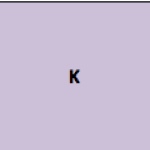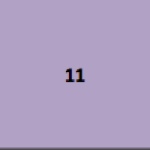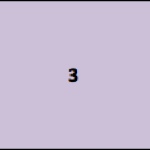Information
-
Document No.
-
Audit Title
-
Client / Site
-
Conducted on
-
Prepared by
-
Location
-
Personnel
U.S. History
-
Explain the cause-effect relationships and legacy that distinguish significant historical periods from Reconstruction to the present.
-
Relate previously learned information of these time periods to the context of succeeding time periods.
-
Relate the causes and consequences of historical events to subsequent events and their legacy in current conditions.
-
Describe the causes and effects of interaction between the U.S. government and Native American cultures.
-
Describe the causes and effects of cultural, economic, religious, political, and social reform movements on the development of the U.S.
-
Identify the influences of local groups on settlement patterns of South Dakota and the Great Plains Region.
-
Evaluate the significance of interactions between the U.S. government and diverse cultures in relation to cultural preservation versus cultural assimilation.
World History
-
Explain the cause-effect relationship and legacy that distinguish significan historical periods from the Renaissance to the present.
-
Relate the causes and consequences of historical events to subesequent events and their legacy in current conditions.
-
Define the key distinguishing features of significan cultural, economic, and political phillosophies in relation to the other.
-
Describe the emergence, rise, impact, and role of significant cultural, economic, and political events and philosophies.
Geography
-
Use resources, data services, and geographic tools that generate and interpret information.
-
Interpret geographic representations when given information about places and events.
-
Evaluate and select resources, data services, and geographic tools that generate and interpret information.
-
Construct geographic representations when given information about places and events.
-
Identify and explain the impact of the natural environment on human settlement patterns.
-
Explain how humans interact with their environments.
-
Explain how human migration impacts local and global politics, environment, economies, societies, and regions.
-
Identify the main characteristics of cultural geography.
-
Analyze and articulate the fundamental role that place characteristics and environments have played in history.
-
Evaluate how humans interact with their environment.
-
Investigate how past and present trends of human migration impact both local and global politics, environments, economies, and societies.
-
Compare and contrast the differing characteristics in developing and developed countries.
Civics
-
Explain the characteristics of various forms of government.
-
Determine the influence of major historical documents and ideals on the formation of United States government.
-
Identify the principles of the American Constitution.
-
Explain the principle of American democracy.
-
Describe the state, local, and tribal governments with emphasis on their structures, functions, and powers.
-
Describe the elements of how U.S. foreign policy is created.
-
Compare the United States' political systems with those of major democratic and authoritarian nations in terms of the structures and power of politcal institutions.
-
Describe the means of influencing and/or participating in a republic.
-
Interpret the meanign of basic constitutional rights guaranteed to citizens.
-
Describe the process of naturalization.
-
Enumerate the basic constitutional rights guaranteed to citizens and their related impacts on society.
-
Analyze and explain the purpose of politics/political activity and the related implication for United States citizens.
-
Identify various issues involving individual rights and responsibilities in relation to the general welfare.
-
Analyze campaigns for national, state, and local elective office, including the nominating process, campaign funding and spending and the influence of media coverage, including campaign advertising and public opinion polls.
Economics
-
Compare the characteristics of the world's traditional command, market, and mixed economies. [U.S. History, World History, Geography, Civics (Government)]
-
Explain how scarcity and surplus affects the basic questions of what, how, how much, and for whom to produce. [Geography, Civics (Government)]
-
Explain the role of money and the structure of the banking system of the U.S. [U.S. History, Civics (Government)]
-
Explain the impact of labor and governmental policies on the economy of the United States. [U.S. History, Civics (Government)]
-
Use graphs to illustrate changes in economic trends. [U.S. History, Civics (Government)]
-
Explain the basic elements of trade and its impact on the U.S. economy. [Civics (Government)]
-
Differentiate the patterns and networks of global economic interdependence in relation to local, regional, and world economies.
-
Analyze graphs to determine changes in supply and demand and their effect on price and quality.
-
Compare and contrast the economic systems of foreign countries with market systems of the United States.
-
Describe methods used to measure domestic output, national income and price level.
-
Describe the effect of fluctuation in national output and its relationship to unemployment and inflation.









